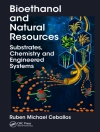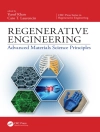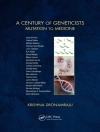Each chapter will focus on the known molecular characteristics of specific childhood cancers, focusing on how the molecular ‘drivers’ can be exploited from a therapeutic standpoint with currently available targeted agents. Where applicable, integration of targeted therapies with conventional cytotoxic agents will be considered.
This volume will provide a comprehensive summary of molecular characteristics of childhood cancers, and how the changes involved in transformation provide us with opportunities for developing relatively less toxic, but curative, therapies.
Tabela de Conteúdo
Hematologic Malignancies.- The Emerging Era of Targeted Therapy in Childhood Acute Lymphoblastic Leukemia.- Molecular Targeted Therapies in T-Cell Acute Lymphoblastic Leukemia.- Molecularly Targeted Therapy for Infant ALL.- Targeted Therapeutic Approaches for AML.- Acute Promyelocytic Leukaemia.- Down Syndrome and Acute Myeloid Leukemia: An Unique Genetic Sensitivity to Chemotherapy.- Targeting RAS Signaling Pathways in Juvenile Myelomonocytic Leukemia (JMML).- Chronic Myeloid Leukemia: Pathophysiology and Therapeutics.- Molecularly Targeted Therapies in Pediatric Myelodysplastic Syndromes.- New Therapeutic Frontiers for Childhood Non-Hodgkin Lymphoma.- Molecular Targeting of Post-transplant Lymphoproliferative Disorders.- Solid Tumors.- Molecularly Targeted Therapies for Astrocytomas.- Targeted Therapy in Medulloblastoma in Molecularly Targeted Therapy for Childhood Cancer.- Future Treatments of Ependymoma.- Development of Targeted Therapies for Rhabdoid Tumors Based on the Functions of INI1/h SNF5 Tumor Suppressor.- Development of Targeted Therapies for Neurofibromatosis Type 1 (NF1) Related Tumors.- Molecular Therapy for Neuroblastoma.- Ewing’s Sarcoma Family of Tumors: Molecular Targets Need Arrows.- Molecular Targeted Therapy for Wilms’ Tumor.- Molecular Therapy for Rhabdomyosarcoma.- Molecularly Targeted Therapy for Osteosarcoma: Where Do We Go from Here?.- Nonrhabdomyosarcoma Soft Tissue Sarcoma in Children: Developing New Treatments Based on a Better Understanding of Disease Biology.












